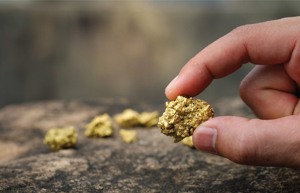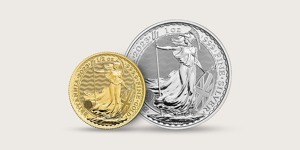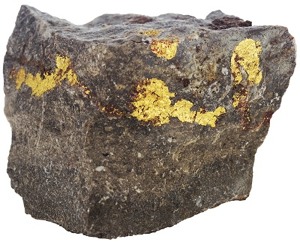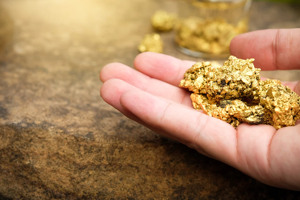Tavex uses cookies to ensure website functionality and improve your user experience. Collecting data from cookies helps us provide the best experience for you, keeps your account secure and allows us to personalise advert content. You can find out more in our cookie policy.
Please select what cookies you allow us to use
Cookies are small files of letters and digits downloaded and saved on your computer or another device (for instance, a mobile phone, a tablet) and saved in your browser while you visit a website. They can be used to track the pages you visit on the website, save the information you enter or remember your preferences such as language settings as long as you’re browsing the website.
| Cookie name | Cookie description | Cookie duration |
|---|---|---|
| tavex_cookie_consent | Stores cookie consent options selected | 60 weeks |
| tavex_customer | Tavex customer ID | 30 days |
| wp-wpml_current_language | Stores selected language | 1 day |
| AWSALB | AWS ALB sticky session cookie | 6 days |
| AWSALBCORS | AWS ALB sticky session cookie | 6 days |
| NO_CACHE | Used to disable page caching | 1 day |
| PHPSESSID | Identifier for PHP session | Session |
| latest_news | Helps to keep notifications relevant by storing the latest news shown | 29 days |
| latest_news_flash | Helps to keep notifications relevant by storing the latest news shown | 29 days |
| tavex_recently_viewed_products | List of recently viewed products | 1 day |
| tavex_compare_amount | Number of items in product comparison view | 1 day |
| Cookie name | Cookie description | Cookie duration |
|---|---|---|
| chart-widget-tab-*-*-* | Remembers last chart options (i.e currency, time period, etc) | 29 days |
| archive_layout | Stores selected product layout on category pages | 1 day |
| Cookie name | Cookie description | Cookie duration |
|---|---|---|
| cartstack.com-* | Used for tracking abandoned shopping carts | 1 year |
| _omappvp | Used by OptinMonster for determining new vs. returning visitors. Expires in 11 years | 11 years |
| _omappvs | Used by OptinMonster for determining when a new visitor becomes a returning visitor | Session |
| om* | Used by OptinMonster to track interactions with campaigns | Persistent |
| Cookie name | Cookie description | Cookie duration |
|---|---|---|
| _ga | Used to distinguish users | 2 years |
| _gid | Used to distinguish users | 24 hours |
| _ga_* | Used to persist session state | 2 years |
| _gac_* | Contains campaign related information | 90 days |
| _gat_gtag_* | Used to throttle request rate | 1 minute |
| _fbc | Facebook advertisement cookie | 2 years |
| _fbp | Facebook cookie for distinguishing unique users | 2 years |
The Potential of Estonian Gold Mining is High

Finland and Sweden, where we have some Tavex offices, are among the five largest gold miners in Europe. The latest studies show that the potential of precious metals in our country is also greater than expected. Could Estonia also become one of Europe’s biggest gold miners?
The largest gold miner in Europe is undoubtedly Russia – in 2022 their gold production reached 325 tons. However, two neighbouring countries – Finland and Sweden – are also at the top of the list of the largest gold miners in the region. The largest gold miners in Europe are listed below.
Whereas the Kittilä mine in Finland is one of the largest in Europe. In Sweden, the most gold bullion is produced in the Aitiku mine. In the top five we also find Bulgaria, for whom gold is one of the most important export items.
There is Definitely Gold in Estonia

In 2017, the leading geologist of the Estonian Geological Center, Valter Petersell, told Postimeh that during the Soviet period, gold analySes were made from the dictyonema shale near the surface, which is located in Estonia at a depth of 5-25 meters, as well as from rocks of the crystalline basement (ca. 150 meters deep).
“These individual analyzes that have been carried out show that gold is definitely present in Estonia, primarily in the Dictionema shale,”
said Petersell
According to Parssell, in order for gold mining to pay off, there should be 4-5 grams of gold per ton. According to his knowledge, potential deposits in Estonia contain up to a gram of gold per ton.
However, later studies have shown that the potential for mining precious metals in Estonia is greater than expected. What is this potential and could we become one of the biggest gold miners in Europe?
Read more on UK gold mines here: Gold Mines in the UK
According to Research, There is More Gold and Silver in the Estonian Soil Than Expected

In 2022, the Estonian Geological Service published a study, the aim of which was to assess the extent of the spread of iron ore causing a magnetic anomaly near Jõhvi in North-Eastern Estonia. It was also found that there is gold and silver in the soil – and its potential is greater than expected.
During the investigation, it was found that the size of the iron ore deposits causing the Jõhvi magnetic anomaly can be between 270-540 million tons, considering the depth of the surface to a kilometer. This is a significant amount of iron ore.

For comparison, in Northern Europe’s largest deposit in Kiirunavara, Sweden, more than 700 million tons of reserves have been explored. The total world production of iron ore reached about 2500 million tons last year. Sweden produces about 50 million tons of it.
Traces of gold and silver were also found during the same research.
“The findings show that there is a potential for the occurrence of precious metals in the crystalline bedrock of Estonia, similar to central Sweden and southwestern Finland,”
the Estonian Geological Service announced
The Jõhvi magnetic anomaly was discovered already in the 1930s, when the defense forces of the Republic of Estonia started the first pan-Estonian magnetometric mapping. Several anomalies were discovered, but the area slightly northeast of Jõhvi stood out clearly. A large deviation in the compass gave rise to the belief that the subsoil there hides a huge amount of iron ore.
The Potential of Precious Metals is Greater Than Expected

Siim Nirgi, senior geologist of the Estonian Geological Service, said that the rocks of Jõhvi have been studied for decades, but now it was found out that the potential of precious metals is greater than expected. And this was found out largely thanks to updated technologies and research methods.
“Although in terms of iron ore, the Jõhvi deposit is not currently economically profitable compared to mines operating in Northern Europe due to its relatively low iron content and difficult availability, the project showed that our knowledge of the crystalline structure is far from sufficient,”
said Nirgi
“Even in the rocks of Jõhvi, which have been studied for decades, it is possible to make surprising discoveries with modern research methods, such as, for example, a greater potential for the occurrence of precious metals than previously known,” explained Nirgi.
In the form of Jõhvi’s study, it is the first study of the basic crystalline order after the Soviet-era deep mapping period.
According to Kalle Kirsimäe, professor of geology and mineralogy at the University of Tartu, the findings are extremely exciting:
It turns a new page in learning about Estonia’s geological structure and history of development, but it is also significant in terms of new prospective subsoil resources. The crystalline bedrock of Estonia, in which the Jõhvi iron ore is located, has assumed common structural features with the rocks exposed in central Sweden and southwestern Finland, where many iron, copper, silver, and gold deposits have been known for a long time. The mineralization of precious metals discovered in Jõhvi rocks confirms these geological connections. With these studies, we have shown that copper-silver and gold mineralization is possible in Estonia. The first step has been taken.
The Feasibility of Mining Will be Revealed in the Course of Further Research
In the roadmap for exploration and research of strategic mineral resources of Estonia published in 2023 by the Estonian Geological Survey, gold and silver can be found in the list of metals whose exploration is justified according to current knowledge.
The Estonian Geological Service has identified the Tallinn, Tapa and Jõhvi zones as a potential distribution area.
This means that the potential and economic sense of mining precious metals will be revealed in the course of further research. At the beginning of last year, the Estonian Geological Service received additional funding of 6.1 million euros to continue further research.

















